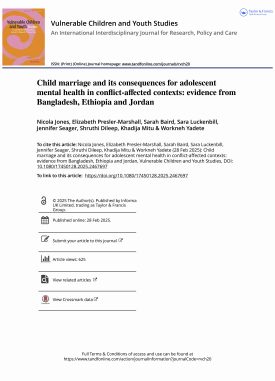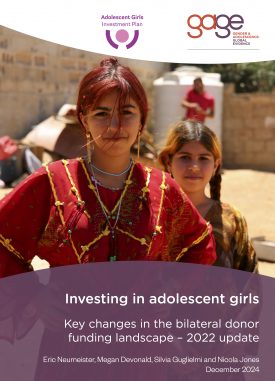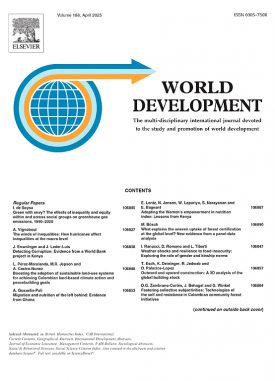At the halfway point to the Sustainable Development Goals (SDGs) there is an urgent need for a detailed and up-to-date understanding of funding to support the wellbeing and development of adolescent girls. If the SDGs are to be achieved, in line with the Leave No One Behind agenda, it is vital that adolescent programming is appropriately funded. Our previous report ‘Investing in adolescent girls’ mapped investments in adolescent girls using the most recent data available at the time (2016-2020). We found that the amount of funding going to adolescents does not match the needs of the large adolescent and youth populations in low- and middle-income countries (LMICs) and that this funding was distributed unequally across sectors and populations (Devonald et al., 2023). This new report provides an overview of key changes in the adolescent funding landscape by incorporating newly published financing data from 2021. We found that in 2021, the amount of gender- and adolescent-targeted ODA provided by the top 10 bilateral donors included in this review increased marginally from $7.6 billion in 2020 to $7.7 billion in 2021. However, this increase did not match the overall increase in ODA provided by these donors over this timeframe. Accordingly, the percentage of gender- and adolescent-targeted ODA as a share of overall ODA decreased from 5.6% to 5.5%. Our analysis underscores that post-pandemic investments are not reaching adolescent girls. This reinforces the urgency of increasing both advocacy and evidence on the importance of funding programming that targets adolescent girls.
Suggested citation:
Devonald, M., Guglielmi, S. and Jones N. (2023) Investing in adolescent girls: key changes in the bilateral donor funding landscape. Report. London: Gender and Adolescence: Global Evidence (https://www.gage.odi.org/publication/investing-in-adolescent-girls-key-changes-in-the-bilateral-donor-funding-landscape-2021-update/)


